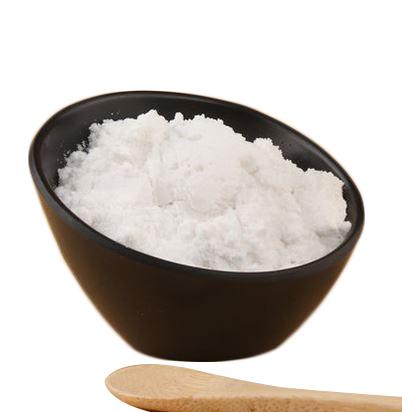Welcome › Forums › Techniques, Tips and Tricks › What is the Alum Powder used for Chinese painting?
Tagged: alum powder, Chinese painting, mounting, Tang Ka
- This topic has 5 replies, 4 voices, and was last updated 4 years, 3 months ago by
 Elec.
Elec.
-
AuthorPosts
-
-
26th August 2017 at 10:40 am #13921
-
26th August 2017 at 10:50 am #13922
 罗雁 LuoYanKeymaster
罗雁 LuoYanKeymaster Recently, one of INKSTON clients kindly helped us confirmed that the Alum Powder is in fact Potassium Aluminium Sulphate. This is important because then people can find it easily and economically in their own country.
Recently, one of INKSTON clients kindly helped us confirmed that the Alum Powder is in fact Potassium Aluminium Sulphate. This is important because then people can find it easily and economically in their own country.We normally grind this chemical into fine powders so that it can dissolve easily in water. I found in several books that when dissolve the alum powder, you cannot use water over 64°c because water over this degree will cause chemical reactions on Potassium Aluminium Sulphate.
As for how much Potassium Aluminium Sulphate is used needs attention too because Potassium Aluminium Sulphate actually might ‘damage’ the paper. In Chinese, we call this ‘bite paper’. You can consider 10g Potassium Aluminium Sulphate for 500g water. In winter, around 10% lessPotassium Aluminium Sulphate is used.
If you need to make glue for Chinese painting, you can use this powder and animal skin/ bone to make special glue. Such glue helps to size different types of papers. This glue can also help lock and enhance colours when painting. Especially when you need to apply quite a few layers of colours on paper, every one to two layers would need you to apply a layer of diluted glue water. This helps a lot when you need to paint many layers of colours. It can keep the clours from ‘mixing’ with other colours. This technique was used for Mo Gao Cave Mural paintings and helped to preserve these precious paintings for over 1300 years. Even nowadays, the bllue azurite, malachite greens are still very bright.
The two top natural colours manufacturers in China normally have added high end animal glue in their natural colours. However, if you need, you can control the percentage of the glue used in their colours by ‘washing the colour chips/ sticks’ or by adding extra glues in the colours. It is easier for you to reduce the glue percentage for Jiang SiXu Tang’s colour chips than Old Hu Kai Wen inksticks. They both are very fine materials for Chinese painting and Tang Ka painting.
https://www.inkston.com/shops/inks/jiang-si-xu-tang-natural-mineral-colours/
-
26th August 2017 at 5:29 pm #13962
 罗雁 LuoYanKeymaster
罗雁 LuoYanKeymasterTraditionally the portion is 10g alum for half litre water. Normally two teaspoons would be around 10g. For tablespoon, I would say 2/3 tablespoon would equal 10g. Then try 2 to 2.5 cups of water. (one teaspoon values around 5g; one cup values between 1⁄5 and 1⁄4 of a liter) 🙂 Hope this is helpful!
-
27th August 2017 at 3:26 am #14060
 inglenoParticipant
inglenoParticipantAlum water is also used as a waterproofing wash, shown here in this china daily article on fan-making:
http://www.chinadaily.com.cn/culture/art/2017-08/24/content_31045699_8.htm
![A craftsman brushes a layer of alum water on the fan to make it water-proof. [Photo/IC]](http://www.chinadaily.com.cn/culture/art/img/attachement/jpg/site1/20170824/d8cb8a51564a1b08814707.jpg)
-
16th May 2018 at 4:21 pm #18935
 DavidParticipant
DavidParticipantI find that when I use Alum powder in the ink it creates an aquatint effect.
Ie it seperates the pigment into small dots ( much like an aquatint in etching) .
This has probably because alum acts like a flux and seperates the pigment from the water.
The other interesting phenomena is that when I add an extra colour ,say blue to the black ink ,the blue will be cats out of the line causing an interesting ‘ halo ‘ effect with the line.
We call it the magic ingredient .
-
20th April 2021 at 12:04 pm #21169
 ElecParticipant
ElecParticipantAs alum acidity could damage the paper, I was wondering if it could also be harmful for your brushes. Does anyone know?
-
-
AuthorPosts
- You must be logged in to reply to this topic.
